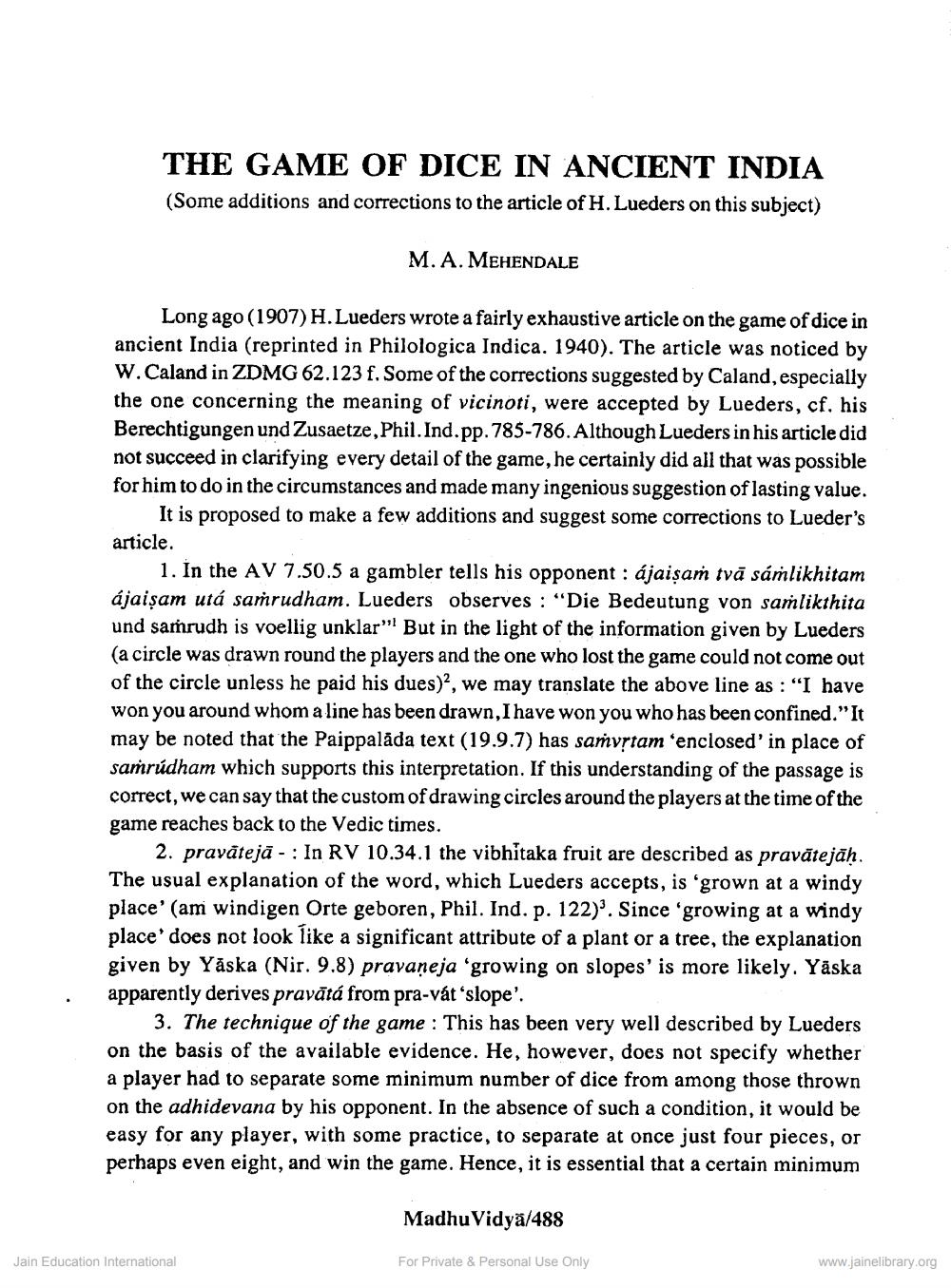________________
THE GAME OF DICE IN ANCIENT INDIA (Some additions and corrections to the article of H. Lueders on this subject)
M.A. MEHENDALE
Long ago (1907) H. Lueders wrote a fairly exhaustive article on the game of dice in ancient India (reprinted in Philologica Indica. 1940). The article was noticed by W. Caland in ZDMG 62.123 f. Some of the corrections suggested by Caland, especially the one concerning the meaning of vicinoti, were accepted by Lueders, cf. his Berechtigungen und Zusaetze, Phil. Ind.pp.785-786. Although Lueders in his article did not succeed in clarifying every detail of the game, he certainly did all that was possible for him to do in the circumstances and made many ingenious suggestion of lasting value.
It is proposed to make a few additions and suggest some corrections to Lueder's article.
1. In the AV 7.50.5 a gambler tells his opponent : ájaisam tvā sámlikhitam ájaişam utá saṁrudham. Lueders observes : "Die Bedeutung von samlikthita und saṁrudh is voellig unklar"! But in the light of the information given by Lueders (a circle was drawn round the players and the one who lost the game could not come out of the circle unless he paid his dues)?, we may translate the above line as : "I have won you around whom a line has been drawn, I have won you who has been confined." It may be noted that the Paippalāda text (19.9.7) has saṁvstam'enclosed' in place of samrúdham which supports this interpretation. If this understanding of the passage is correct, we can say that the custom of drawing circles around the players at the time of the game reaches back to the Vedic times.
2. pravätejā - : In RV 10.34.1 the vibhitaka fruit are described as pravätejäh. The usual explanation of the word, which Lueders accepts, is 'grown at a windy place' (am windigen Orte geboren, Phil. Ind. p. 122)'. Since 'growing at a windy place' does not look like a significant attribute of a plant or a tree, the explanation given by Yáska (Nir. 9.8) pravaneja 'growing on slopes' is more likely. Yáska apparently derives pravātá from pra-vát ‘slope'.
3. The technique of the game : This has been very well described by Lueders on the basis of the available evidence. He, however, does not specify whether a player had to separate some minimum number of dice from among those thrown on the adhidevana by his opponent. In the absence of such a condition, it would be easy for any player, with some practice, to separate at once just four pieces, or perhaps even eight, and win the game. Hence, it is essential that a certain minimum
Madhu Vidya/488
Jain Education International
For Private & Personal Use Only
www.jainelibrary.org




